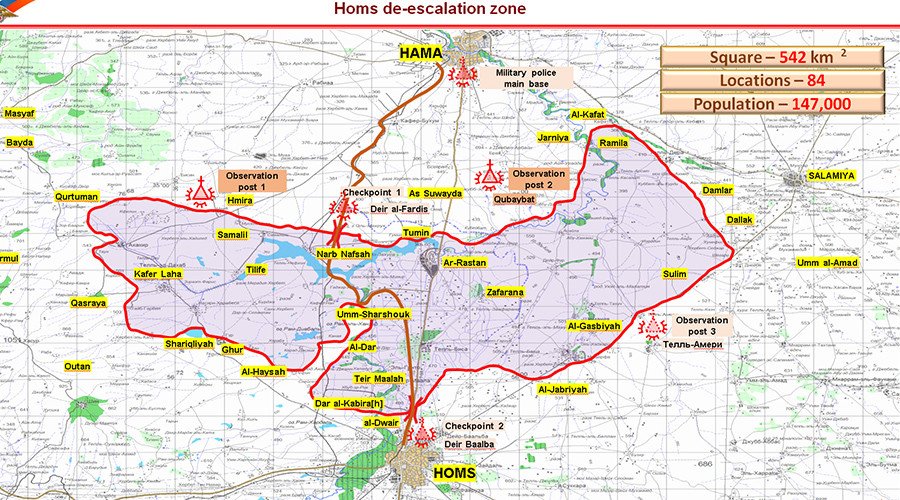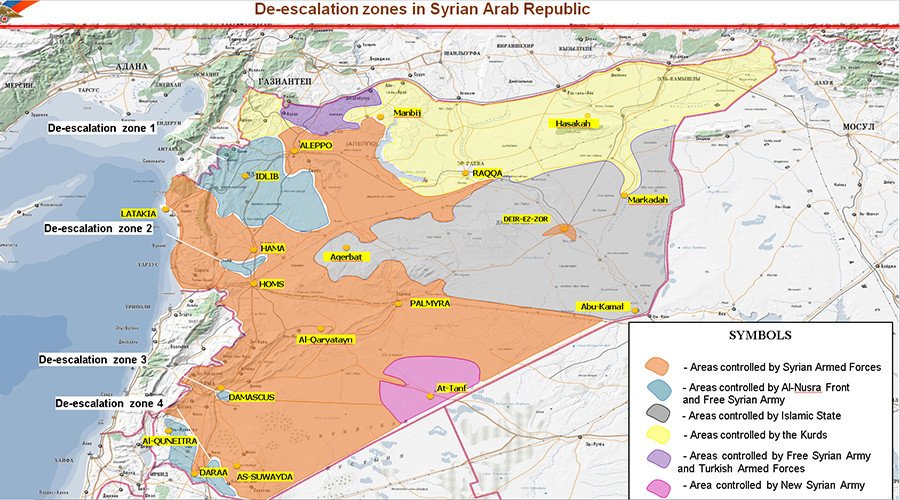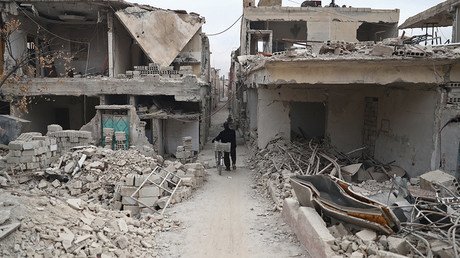Russian military police to control 3rd de-escalation zone coming into force in Syria’s Homs – MoD
A third de-escalation zone is coming into effect north of the Syrian city of Homs, with Russian military police setting up checkpoints and look-out posts to separate the factions, monitor the ceasefire, ensure delivery of aid and facilitate reconciliation.
The ceasefire within the third de-escalation zone comes into force at 12:00pm local time (9:00am GMT) Thursday. Russian military police, who already patrol two safe zones in the southwest of Syria and in Eastern Ghouta, will begin securing the perimeter outside the city of Homs Friday.
“Starting from August 4, the Russian military police is setting up two checkpoints... as well as three look-out posts... along the contact line between the sides at the Homs de-escalation zone,” Russian defense ministry spokesman Igor Konashenkov said in a statement.
The third de-escalation zone in Homs includes 84 towns and villages with a total population of over 147,000 people.

Russian servicemen will be tasked with separating the warring factions and overseeing the implementation of the ceasefire. The military police will also ensure that much needed humanitarian aid deliveries reach the designated areas and will facilitate the evacuation of those needing medical treatment.
“All those sick and wounded would have the opportunity of undergoing treatment at a Russian military hospital or at the Syrian medical institutions,” Konashenkov added.
READ MORE: Russia to continue cooperation with US on de-escalation zones in Syria – Lavrov
The creation of the third ceasefire zone, which doesn’t apply to Islamic State (IS, formerly ISIS/ISIL) and Jabhat al-Nusra terrorists, was made possible following the latest round of negotiations in Cairo between the Russian defense ministry and the Syrian opposition.
Before Russian officers assume their duties, a comprehensive ceasefire between the Syrian army and the moderate opposition will come into effect on noon Thursday.
“The units of the moderate opposition and the detachments of the government forces are fully ceasing fire from all types of weaponry,” Konashenkov said.

The opposition made a commitment to “expel all the units affiliated with IS and Jabhat al-Nusra from the areas of Homs under its control,” Konashenkov added. They also pledged to remove the blockade of the road snaking through the de-escalation zone from Homs to Hama.
“The settlement of daily issues of peaceful life inside the de-escalation zone will be performed by the local councils, formed by the population of the designated areas,” Konashenkov said.
“In order to ensure the effective functioning of the Homs de-escalation zone, a Committee on National Justice will be also formed, which will include opposition representatives from all of the main ethnic, political and religious groups living in this area.”
The proposal to establish four de-escalation zones was signed by Russia, Iran and Turkey, with the approval of the Syrian government just over two months ago in the Kazakh capital, Astana. The UN has welcomed the initiative.
All four designated zones are areas controlled by armed rebels who have been under pressure from the government forces’ advance. Under the terms of the ceasefire agreement, they are to be monitored by the Astana signatories, while Russia retains the right to control the airspace above them, without engaging in air raids.
The ceasefire was further consolidated during the first meeting between Russian president Vladimir Putin and US leader Donald Trump on July 7 in Hamburg, Germany.
However, as the de-escalation zones initiative begins to take hold, the US-led coalition has repeatedly attacked Syrian government forces and their allies within the American declared so-called “de-confliction zone,” where forces not allied with Washington are not allowed to enter. Russia and Damascus do not recognize such 'zones' as they lack consent from the Syrian government or the approval of the UN.













